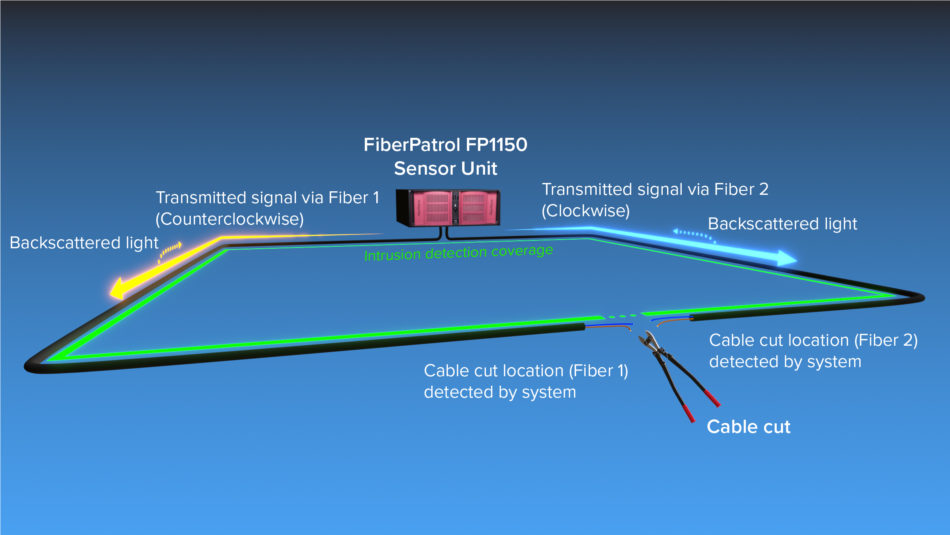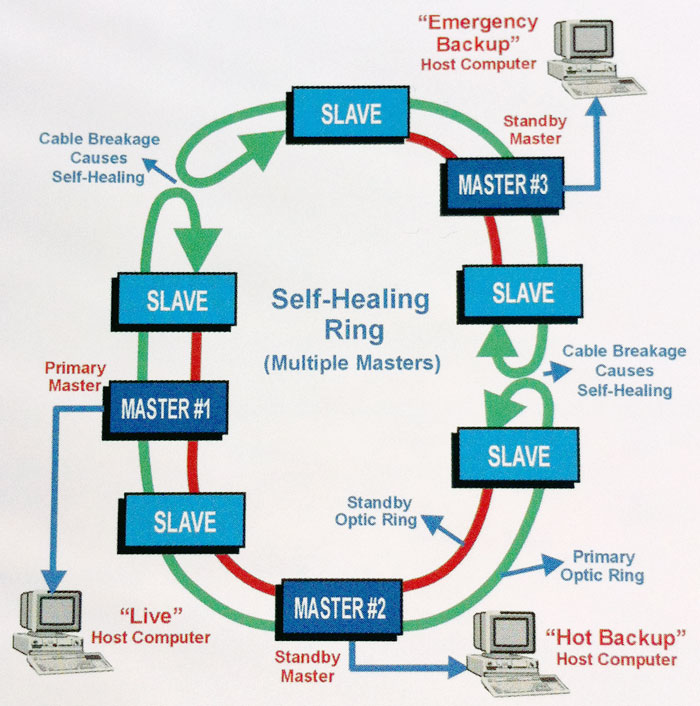The Advantages of a Fiber Optic Security System: Why It’s the Next Step of Secure Networks
The Advantages of a Fiber Optic Security System: Why It’s the Next Step of Secure Networks
Blog Article
Improve Your Safety With Advanced Fiber Optic Protection Equipments
In an era where security is vital, advanced fiber optic safety systems provide an engaging remedy for enhancing safety across different environments. These systems not just flaunt exceptional bandwidth and speed for high-resolution monitoring but likewise use remarkable durability against exterior interferences. As organizations significantly seek trustworthy means to safeguard their possessions, the combination of cutting-edge innovations like AI and IoT within fiber optic structures raises necessary inquiries about their performance compared to conventional systems. What implications do these developments hold for future safety steps?
Benefits of Fiber Optic Protection
Utilizing the advantages of fiber optic technology substantially improves security systems throughout various applications. One of the primary benefits is the raised data transfer capacity, permitting the transmission of large quantities of data at broadband. This is particularly vital for real-time video clip surveillance, where high-resolution feeds can be sent out without latency, guaranteeing immediate response abilities.
In addition, optical fiber exhibit remarkable resistance to electromagnetic disturbance, which is vital in settings with potential signal interruptions. This reliability makes sure regular performance in critical protection operations. Fiber optic cables are less vulnerable to touching and unapproved access contrasted to traditional copper electrical wiring, consequently boosting information honesty and discretion.
Another remarkable benefit is the toughness of fiber optic systems; they are much more immune to ecological variables such as dampness, temperature variations, and destructive substances. This strength converts to decrease upkeep costs and longer lifespans for security installments.
Last but not least, the light-weight nature of fiber optic wires helps with easier installation and routing, specifically in complex frameworks (fiber optic security system). Inevitably, the assimilation of fiber optic technology right into safety and security systems not just bolsters defense measures however additionally enhances functional efficiency
Secret Functions to Think About
When evaluating fiber optic safety and security systems, a number of crucial attributes need to be considered to ensure optimal efficiency and performance. Assess the system's detection range and sensitivity; an extensive array allows for keeping an eye on large areas, while high level of sensitivity ensures that also minor disturbances are identified quickly.
Following, consider the assimilation capacities of the system. A fiber optic security system need to seamlessly interface with existing safety steps such as video cameras and alarm systems, developing a natural safety and security network.
Toughness and environmental resistance are additionally crucial features. Ensure that the system is developed to withstand harsh climate condition and prospective physical dangers, as this will lengthen its operational life expectancy.

Finally, look right into the scalability of the system. A durable fiber optic protection system need to be easily expandable to accommodate future needs without significant overhauls. By very carefully considering these attributes, you can pick a fiber optic protection service that improves safety and safety in your environment.
Installment Process Review
To effectively apply a fiber optic protection system, a methodical installation procedure is essential. This process starts with an extensive site evaluation to figure out the particular protection needs and to recognize optimum locations for fiber optic cable televisions and protection tools. Following this assessment, the setup team will certainly develop a thorough strategy, including cable pathways, essential equipment, and conformity with regional policies.
Following, the installation includes laying the fiber optic wires, ensuring they are protected from environmental variables and physical damage. Appropriate handling methods are critical, as fiber optic wires are sensitive and can be conveniently damaged. After the cabling is installed, connectors and terminations are meticulously finished to make sure signal honesty.
The subsequent phase includes why not try here installing safety gadgets such as video cameras, movement detectors, and alarm systems, all integrated with the fiber optic network. Rigorous screening is performed to validate that all elements are working properly and to ensure optimum efficiency.

Contrasting Fiber Optic to Standard Solutions
The development of safety and security technology has brought about substantial improvements in the comparison in between fiber optic systems and typical copper-based systems. Fiber optic systems use light to transfer data, offering premium transmission capacity and speed compared to their copper equivalents. This leads to enhanced data transmission abilities, making fiber optics ideal for high-resolution video surveillance and real-time surveillance.
Additionally, fiber optic cable televisions are resistant to electromagnetic interference, lowering the probability of signal degradation brought on by outside factors. This characteristic ensures constant performance, also in challenging atmospheres. On the other hand, standard copper systems are much more at risk to disturbance, resulting in possible vulnerabilities in protection applications.
Toughness is another benefit of fiber optic systems. They are much less prone to harm from environmental aspects such as moisture and temperature level variations, which can compromise copper electrical wiring. Furthermore, fiber optics are lighter and thinner, permitting simpler installment and reduced physical footprint.
However, traditional systems often tend to have reduced initial expenses, making them appealing for budget-conscious tasks. While fiber optic systems might require a higher in advance financial investment, their long-term benefits-- such as lower maintenance expenses and higher integrity-- often outweigh the preliminary expenditure, positioning them as a remarkable selection for modern-day protection requirements.
Future Patterns in Safety Modern Technology
Emerging trends in safety and security innovation our website are positioned to transform the landscape of monitoring and danger discovery - fiber optic security system. As companies increasingly deal with innovative dangers, technologies such as expert system (AI) and artificial intelligence (ML) are coming to be indispensable to protection systems. These modern technologies boost the capacity of fiber optic systems by allowing real-time data analysis, recognizing abnormalities, and automating feedbacks to possible violations
Furthermore, the integration of the Net of Points (IoT) is reinventing safety and security frameworks. IoT gadgets can supply detailed situational understanding and facilitate smooth communication between various safety elements. This interconnectedness enables for more reliable tracking and faster event feedback times.
Biometric verification is also obtaining momentum, providing a greater level of security with distinct physical characteristics. As this modern technology develops, it is most likely to be integrated into fiber optic systems for boosted gain access to control.
Verdict
In verdict, advanced fiber optic protection systems my link stand for a substantial advancement in security and monitoring modern technology. The change from traditional systems to fiber optic services reflects a growing pattern towards a lot more reliable and reliable protection actions in an increasingly complex technical landscape.
Report this page